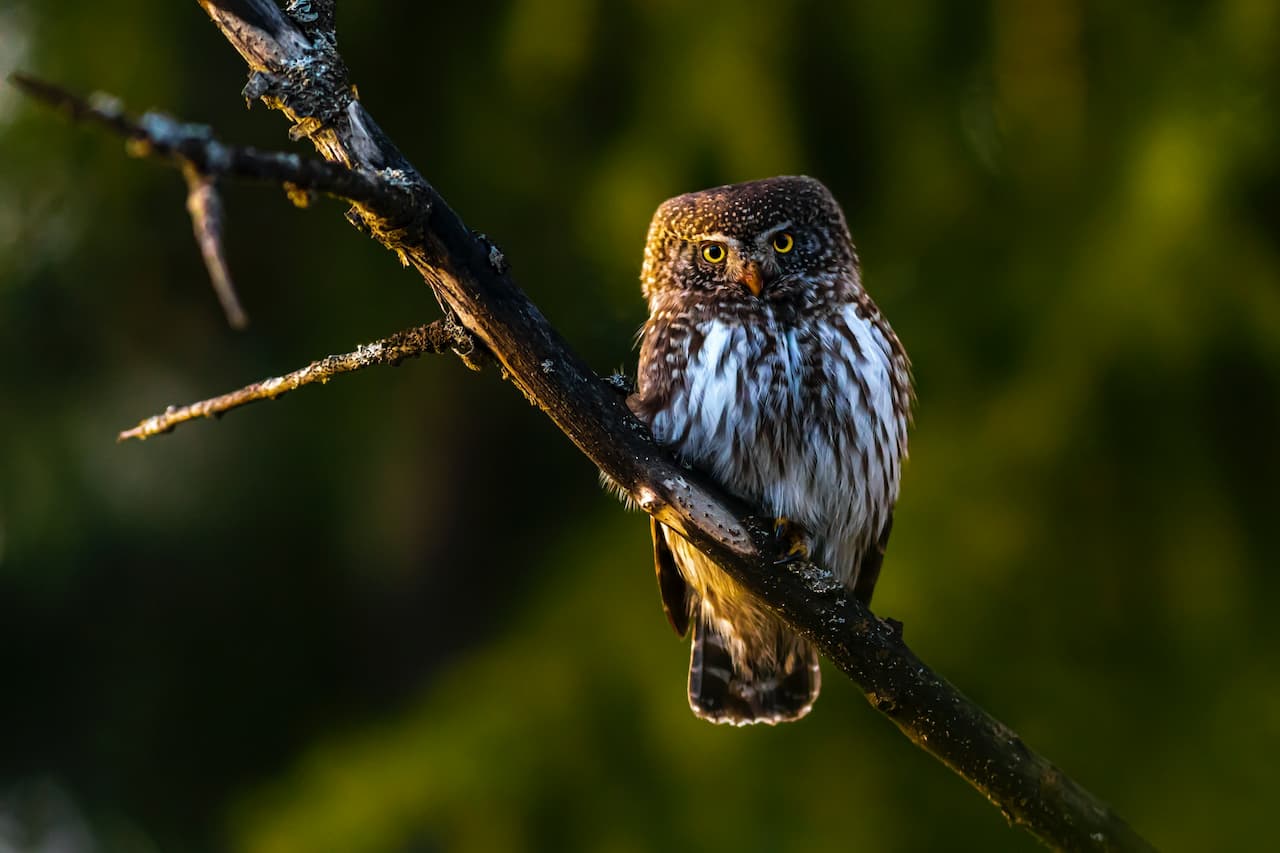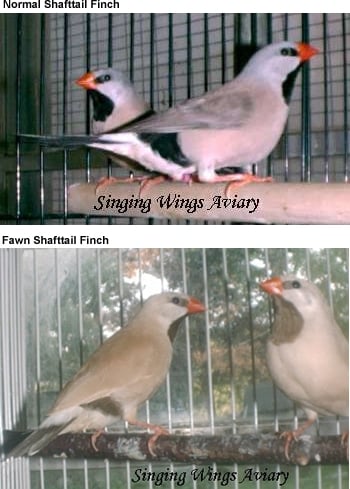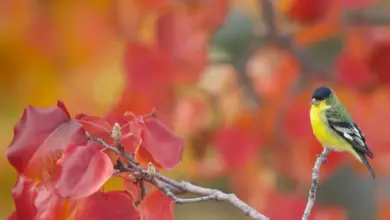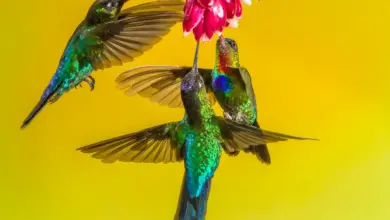What Do Dark-Eyed Juncos Eat? What Is Their Diet?
In this article, we look at what dark-eyed juncos eat, their preferences across seasons, what they feed to their juveniles, and more.
The dark-eyed junco (Junco hyemalis) is a familiar avian face across Canada and the United States – and all the way down to Mexico.
This sparrow-type bird is quite abundant in North America – it is estimated that there are around 630 million individuals on the continent!
A popular nickname for this junco species is “a snowbird.” These birds often migrate from their breeding grounds to more southern locations in the winter.
Thus, it may seem as if they were bringing the snow along with them. But why do they get moving in the first place?
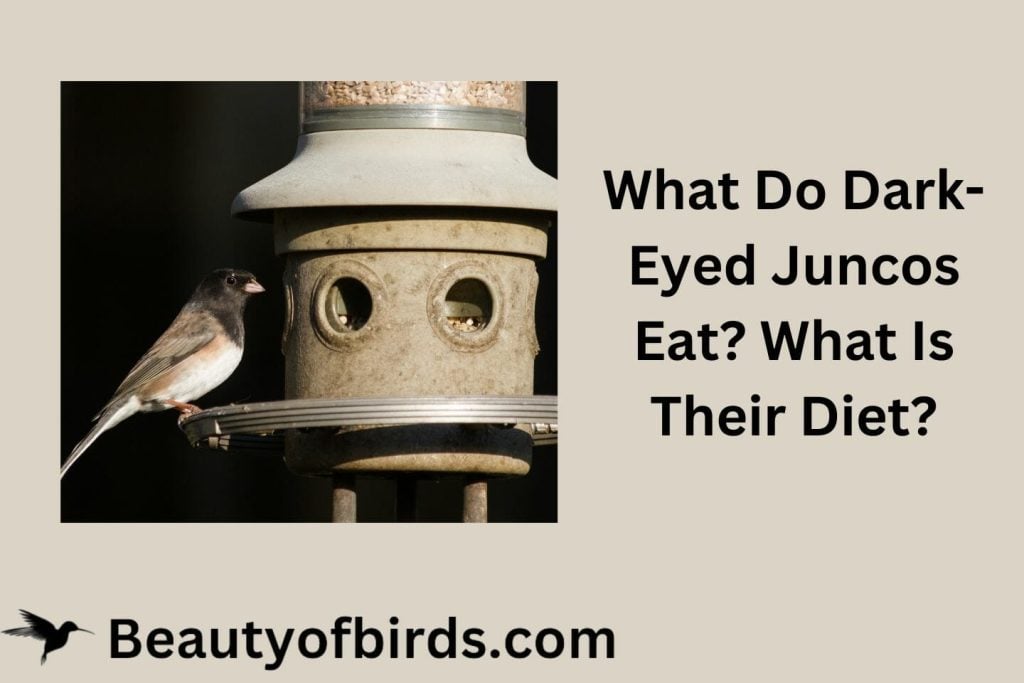
The main reason for junco migrations is the harsh winter in the far-north breeding range – so harsh it cannot sustain such a large population of birds over the cold months.
It now becomes evident that the main reason why juncos migrate is – food!
The fact that juncos are one of the most common birds at birdfeeders during winter is now much more apparent, isn’t it?
This article is dedicated to junco food preferences – what they eat, where they find it, and how they behave while foraging.
What do Dark Eyed Juncos Eat?
Dark-Eyed Juncos are omnivores and feed on plant and animal foods. These include:
- Seeds (grass seeds, weed seeds, millet, sunflower, etc.)
- Berries (wild and native)
- Arthropods (various insects such as caterpillars, small beetles, crickets, etc., and other arthropods such as spiders).
The particular kind of seeds, berries, and insects that juncos consume depend on what’s available in their geographic range.
Also, there is a pronounced seasonal pattern or variation in what juncos choose to eat.
Adult juncos definitely prefer plant food – 75% of their diet consists of plant matter, mostly seeds. The percentage becomes even greater in the winter when little to no insects are available to eat.
However, during spring and summer – the breeding season – insects become a substantial part of the dark-eyed junco diet – that’s the time of the year when these birds need a lot of energy and protein.

Junco chicks will be fed insects and invertebrates almost exclusively. They require lots of nutrient-packed food to be able to grow so fast, leaving the nest only 9-13 days after hatching.
Berries that juncos consume usually belong to native shrubs. The birds don’t pick them off the shrubs but usually wait until they drop to the ground.
Where Do Dark-Eyed Juncos Find Food?
Juncos are ground-feeding birds. What that means is that they locate most of their food on the forest floors and on the ground of meadows, fields, and other open spaces.
During the breeding season, the dark-eyed juncos are found in conifer and mixed forests (partially deciduous forests) consisting of pines, spruces, and hardwood species.
Here, there are plenty of insects to catch during the warmer part of the year, so juncos can provide their young with enough animal protein they require to develop.
Even in forests, juncos will usually forage on the floor, with dense shrubs for cover somewhere nearby.
However, as Autumn approaches, arthropods slowly lose their prominent place in the Dark-eyed junco menu.
With winter approaching, juncos start to gather in flocks and migrate to more southern areas and choose more open types of habitat.

At that point, you can observe them looking for precious seeds closer to human settlements – and very often at birdfeeders.
Also, this is the time of the year when the birds’ appetites get bigger because they are getting ready for overwintering. That is why they love to take a prominent spot at artificial birdfeeders.
Dark-Eyed Junco Diet Effects on the Environment
Besides satisfying hunger and retrieving lost energy, all creatures that are a part of the food web influence their environments in one way on another.
In the case of juncos and many other birds, they are literally shaping ecosystems.
Birds are actually champions of ecosystem engineering because they spread plant seeds, along with some chemically valuable natural fertilizers (aka, bird excrement).
That way, they directly influence the composition of the plant community.
The plant community, on the other hand, dictates everything else in that habitat – the presence of particular insects, other birds, and small mammals in connection with the plants.

Seed-eating and fruit-eating birds, such as dark-eyed juncos, are especially important in this respect.
They disperse seeds and help some sprout by damaging their tough shell in the crop. On the other hand, they may destroy the seeds of some undesirable plants.
Through their feeding habits, the dark-eyed juncos help control insects we consider agricultural pests, such as certain moths and their caterpillars.
They keep their numbers (and the entire ecological balance) in check by eating them.
What Can I Feed a Dark-Eyed Junco?
First of all, you can plant some of the native seed-rich plats on your property to provide food for birds. These include but are not limited to the following:
- Native wild grasses (genera Panicum, Bouteloua, Andropogon, and Sorghastrum),
- Thistle
- Echinacea
- Black-eyed Susan
- Zinnia
- Other native flowers that produce lasting seedheads
Bird-friendly native shrubs and vines like Oregon holly and Virginia creeper (respectively), with small berries that drop to the ground, are an excellent supplemental food source, and the plants themselves will cover the birds.
This way, you help not only the native birds but also wild bees, butterflies, and other cute insects while the plant is still in flower.
Last but not least, you’re also contributing to supporting native plant diversity.
However, most people will want a birdfeeder as an addition or a stand-alone way to provide food for their wild feathered friends.
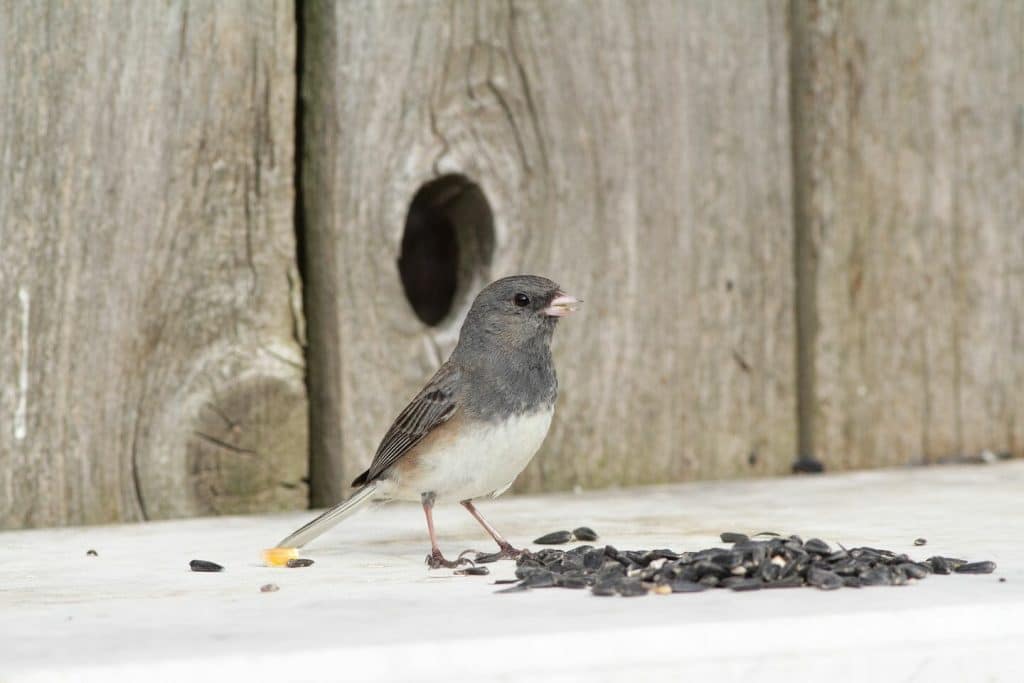
As for the commercially available bird seeds, the number one favorite food of dark-eyed junco seems to be the Millet – both red proso millet and white proso millet.
Millet is an ancient crop originating from the Middle East and Asia. Thus, it is not a native food item for juncos but is similar to seeds they consume in the wild.
Sunflower is the next favorite item on the list – the oily seeds will provide juncos with the energy they need to stay warm during winter.
Crushed corn and peanuts (raw) are also an option for variety and additional energy boost.
Do Dark-Eyed Juncos Eat Sunflower Seeds? Junco Food Preferences
Dark-eyed juncos eat sunflower seeds, but the sunflower is usually not their first choice.
Studies have shown that dark-eyed juncos prefer smaller seeds, despite the fact that the larger ones usually store more fat and are, therefore, more energy-efficient to consume.
This probably has to do with the fact that dark-eyed juncos have evolved to eat weed, grass, and wild cereal seeds.
It was also discovered that juncos rather pick sunflower seeds still in their husk, despite the fact that, in theory, the hulled sunflower seeds would be easier to consume.
What NOT To Feed Juncos?
You should never feed dark-eyed juncos – or any other bird, for that matter – the with following items.
- Bread and pastries,
- Salty snacks,
- Salted and or/fried seeds (no, not even sunflower hearts)
- Cookies and other sweets.
I know that people feed these to birds out of best intentions. However, human foods contain salt, sugar, and refined fats that are extremely unhealthy for birds.
Also, this may come as a surprise, but wheat and other commercial grains are mostly unusable for songbirds.
The wheat we grow is a hybrid with large, hard seeds and doesn’t offer much nutritional value to birds. In bird feeder mixes, they are actually used as a cheap filler (unless you’re planning to feed chickens or pigeons).

What Birdfeeders Are Best For Dark-Eyed Juncos?
When we think about birdfeeders, the cylindrical hanging type is a modern-day favorite
However, for sparrows and finches, this type is not very appropriate. Unlike tits, for example, ground-feeding birds are not used to acrobatic twists and turn to get food.
That is why a platform feeder or a simple open tray is the most comfortable for Juncos to use.
Although you want a low feeder (remember, ground feeding), make sure that the platform or a tray is at the height cats can’t reach – 6 feet or higher is advisable.
Special note on cats and junco feeders
When feeding juncos and other wild birds, please be careful that there are no pet or feral cats nearby.
As ground-feeding birds, juncos are especially sensitive to cat predation and are regularly caught and killed by cats (not even for food, but for fun).
Predation of native wild birds by cats is not “natural.” The domesticated cat is not a native predator and has an unnatural population density for a top predator – thanks to us.
That is why cats are one of the leading causes of human-induced bird deaths around the world!
If you have a cat, keep it indoors or walk it on a leash throughout the bird-feeding season.
If you own cats and still insist on keeping them free-range (or the neighbor next door does), then your yard is not suitable for installing a birdfeeder.
Interesting Facts About Dark-Eyed Junco Diet
It is thought that the size of the white patch of the dark-eyed junco males’ tail – the part they flash to females when courting – contributes to their attractiveness and, eventually, their mating success.
Scientists have discovered that males who consume more caloric and nutritious food have larger and brighter white feathers than those who eat a low-calorie diet.
That evolutionary twist is quite logical – the male has to feed the female while she’s sitting on the eggs and also feed the chicks alongside her – so he better be a good insect hunter!
Although they eat mainly off the ground, dark-eyed juncos have a special technique called “stem riding” to get the grass seeds in case they’re still on the plant.
The hungry junco lands on the grass stem and holds on tight as it bends to the ground. Once both the stem and his tiny feet are on the ground, he’ll start eating.
As ground feeders, juncos often hop around the snow to find food. Besides hopping, they have swift digging movements to get to the seeds that are stuck under the snow cover. Beware – the movements can cause a cuteness overload!
Frequently Asked Questions
Do juncos eat fruit?
Do dark-eyed juncos eat at feeders?
However, it is likely that they will position themselves under the feeders rather than on the feeders. As ground dwellers, juncos feel most comfortable eating off the ground.
Do juncos eat meat?
Various insects and other arthropods make a substantial part of the Dark-eyed junco diet, especially during the nesting period.
In fact, dark-eyed junco chicks are mostly insectivorous since insects are richer in fat and protein plus easier to digest than seeds. As they become adults, they will incorporate more and more plant matter into their diet.
This feeding pattern is common among songbirds.
Do dark-eyed juncos eat worms?
However, juncos eat insect larvae we often call “worms” (although they’re not) – grubs, mealworms, caterpillars, and others.
Insect larvae are high in fat and protein and usually lack a hard exoskeleton – thus, they are loved both by adult juncos and their young.
Backyard birders often offer mealworms – darkling beetle larvae that can be bought in pet stores – to supplement nesting birds (and attract them to a particular spot to take top photos!).
Wrap Up (And Bon Appetit)
Dark-eyed juncos are omnivorous birds that readily eat wild grass seeds, wildflower seeds, weed seeds, and berries, arthropods. Their food habits help keep ecological balance – juncos help disperse seeds and keep insect numbers at bay.
If you want to attract juncos to your garden, your menu should offer either native plants with seedheads in your garden and proso millet, sunflower, and crushed corn and peanuts at your feeders.
I hope you had fun reading this article and learned all you wanted to know about the dark-eyed junco diet. If you found it helpful, feel free to share it with friends.

